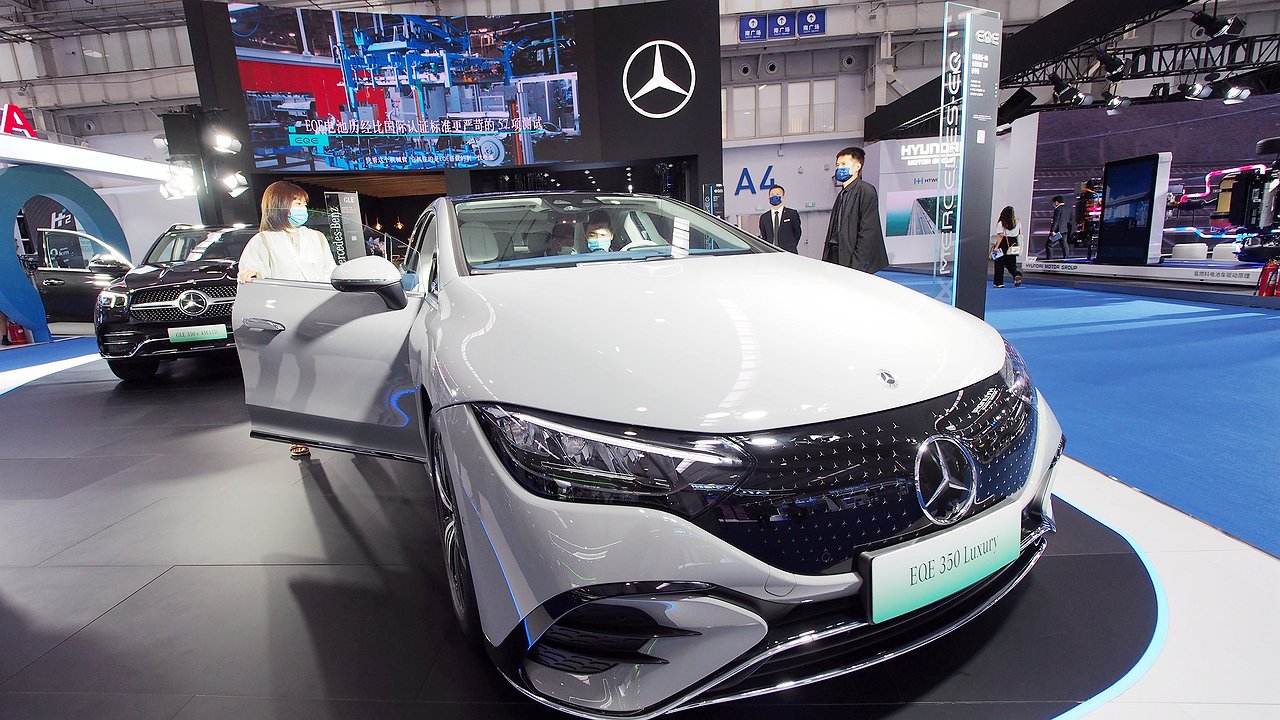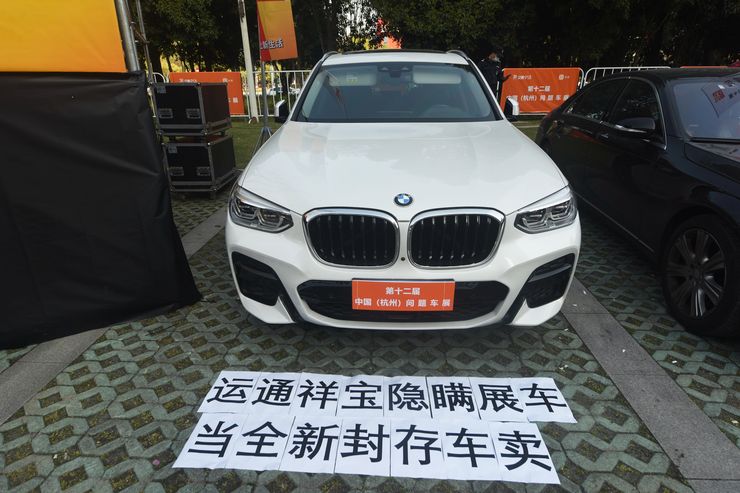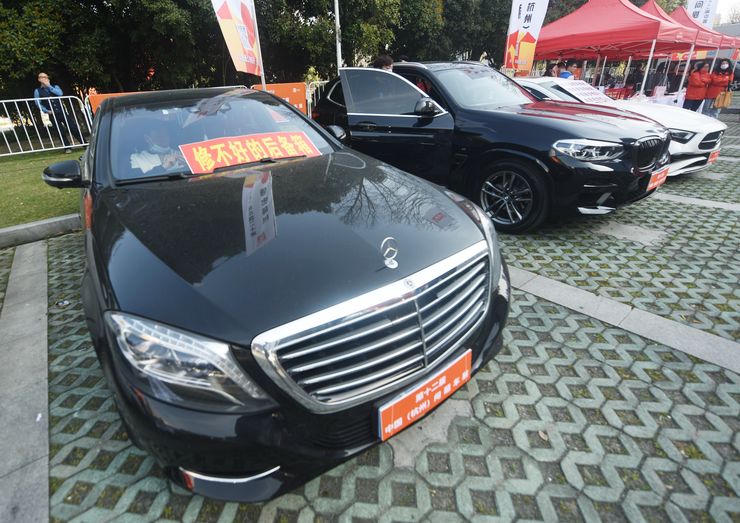Why all German cars will soon become Chinese
- June 26, 2023
- 0
The Ukrainian events and their unpleasant consequences for Europe are beginning to manifest themselves more and more strongly for one of the pillars of the Old World economy
The Ukrainian events and their unpleasant consequences for Europe are beginning to manifest themselves more and more strongly for one of the pillars of the Old World economy

The numbers that characterize the economic condition of the country are boring and to most normal people it seems like a matter infinitely removed from everyday life. But the indicators of the German economy clearly prove that all this macroeconomic absurdity turns into more than tangible effects, even for those who cannot stand to talk about such “derived from reality” topics.
Well, who cares, for example, that German GDP in 2023 is almost condemned to fall by a kind of ridiculous 0.4%! At first glance this is nonsense. But the trick is that Germany is the main donor to the EU budget. And if something goes wrong with his economy, many things will “sprinkle”. What a pity! But what about us?
The fact is that Germany’s GDP, unlike many other European countries, has always been largely based on powerful industry. Who, in turn, until recently enjoyed the benefits of access to cheap Russian natural resources. Now the Germans, because of Ukraine, have abandoned them themselves. Everyone knows the high cost of natural gas, which they now buy not from us, but from American companies. And it is slowly but surely gnawing at the competitiveness of German industry in general and the car industry in particular. After all, without this raw material and energy generated by gas-fired power plants, it would be impossible to produce parts or assemble cars on assembly lines.
The results are already visible. An indirect indicator of problems in the German car industry can be considered the current export performance. It is known that up to 20% of industrial products exported from Germany are car engines. Since the beginning of 2023, the supply of “motorcycles” to China has immediately decreased by more than a quarter. Characteristic touch, isn’t it?
The transition of anything and everything in the EEC (and Germany in particular) vehicle fleet to electric propulsion seems to many to be an opportunity for the local auto industry to face the future. The key to this is lithium, which is used to make traction batteries for electric cars. However, there are no own deposits – a fair amount – of lithium on the territory of the so-called old Europe. And the price in international markets has skyrocketed from $12,000 per ton of lithium carbonate in early 2021 to the current $83,000 per ton. The main metal suppliers are China and a number of South American countries. Moreover, as it turns out, Chinese capital controls quite a few lithium mining companies around the world. That is, the transition to electric transport will obviously not stretch the German car industry: not only gas is now expensive …
And Germany has a more than visible prospect of becoming the birthplace of very, very expensive cars. Expensive even for local residents, who are slowly but clearly getting poorer: this year the volume of consumer demand among the same Germans has decreased by 1.7%.
A clear recession can already be observed in the chemical, metallurgical and construction sectors in Germany. We are talking about the threat to the survival of about 600,000 jobs in total. If all this “collapses”, demand in the local car market will immediately collapse.
For “premium”, such a scenario is relatively acceptable. For some time, he will be able to successfully exploit the “show-offs” of wealthy buyers around the world by raising the prices for his products. Not for a very long time, as the same Koreans and Chinese are already hot on his heels. For all other car brands in Europe, even a similar way out of the situation “does not seem to shine”. And by the way, this applies not only to German, but also to cars produced in France, Italy and Romania.
Therefore, the German (and European in general) car industry has only one way out: to run away from home! That is, to close production that becomes unprofitable in the Old World and transfer it to the same China. Not just because there is a gigantic car market. You just can’t go anywhere else. In the US, as everyone understands, a budget Dacia Logan or a compact VW Golf will be of interest only to a small group of “subtle connoisseurs”. You can’t sell much in the markets of Asia and the Middle East, a “come back” to Russia is not being considered for obvious reasons. India? But there the budget market is already very competitive.
It turns out that the legendary German car brands will only remain “German” from the point of view of full-time marketers for the foreseeable future. The lion’s share of car production can quietly flow to the public in China. Moreover, “bridgeheads” – serious industrial facilities and design centers – are available there for all “Germans”. And the consumer can only wait for the inevitable.


The numbers that characterize the economic condition of the country are boring and to most normal people it seems like a matter infinitely removed from everyday life. But the indicators of the German economy clearly prove that all this macroeconomic absurdity turns into more than tangible effects, even for those who can’t stand to talk about such “derived from reality” topics.
Well, who cares, for example, that German GDP in 2023 is almost condemned to fall by a kind of ridiculous 0.4%! At first glance this is nonsense. But the trick is that Germany is the main donor to the EU budget. And if something goes wrong with his economy, many things will “sprinkle”. What a pity! But what about us?
The fact is that Germany’s GDP, unlike many other European countries, has always been largely based on powerful industry. Who, in turn, until recently enjoyed the benefits of access to cheap Russian natural resources. Now the Germans, because of Ukraine, have abandoned them themselves. Everyone knows the high cost of natural gas, which they now buy not from us, but from American companies. And it is slowly but surely gnawing at the competitiveness of German industry in general and the car industry in particular. After all, without this raw material and energy generated by gas-fired power plants, it would be impossible to produce parts or assemble cars on assembly lines.
The results are already visible. An indirect indicator of problems in the German car industry can be considered the current export performance. It is known that up to 20% of industrial products exported from Germany are car engines. Since the beginning of 2023, the supply of “motorcycles” to China has immediately decreased by more than a quarter. Characteristic touch, isn’t it?
The transition of anything and everything in the EEC (and Germany in particular) vehicle fleet to electric propulsion seems to many to be an opportunity for the local auto industry to face the future. The key to this is lithium, which is used to make traction batteries for electric cars. However, there are no own deposits – a fair amount – of lithium on the territory of the so-called old Europe. And the price in international markets has skyrocketed from $12,000 per ton of lithium carbonate in early 2021 to the current $83,000 per ton. The main metal suppliers are China and a number of South American countries. Moreover, as it turns out, Chinese capital controls quite a few lithium mining companies around the world. That is, the transition to electric transport will obviously not stretch the German car industry: not only gas is now expensive …
And Germany has a more than visible prospect of becoming the birthplace of very, very expensive cars. Expensive even for local residents, who are slowly but clearly getting poorer: this year the volume of consumer demand among the same Germans has decreased by 1.7%.
A clear recession can already be observed in the chemical, metallurgical and construction sectors in Germany. We are talking about the threat to the survival of about 600,000 jobs in total. If all this “collapses”, demand in the local car market will immediately collapse.
For “premium”, such a scenario is relatively acceptable. For some time, he will be able to successfully exploit the “show-offs” of wealthy buyers around the world by raising the prices for his products. Not for very long, because the same Koreans and Chinese are already hot on his heels. For all other car brands in Europe, even a similar way out of the situation “does not seem to shine”. And by the way, this applies not only to German, but also to cars produced in France, Italy and Romania.
Therefore, the German (and European in general) car industry has only one way out: to run away from home! That is, to close production that becomes unprofitable in the Old World and transfer it to the same China. Not just because there is a gigantic car market. You just can’t go anywhere else. In the US, as everyone understands, a budget Dacia Logan or a compact VW Golf will be of interest only to a small group of “subtle connoisseurs”. You can’t sell much in the markets of Asia and the Middle East, a “come back” to Russia is not being considered for obvious reasons. India? But there the budget market is already very competitive.
It turns out that the legendary German car brands will only remain “German” from the point of view of full-time marketers for the foreseeable future. The lion’s share of car production can quietly flow to the public in China. Moreover, “bridgeheads” – serious industrial facilities and design centers – are available there for all “Germans”. And the consumer can only wait for the inevitable.
Source: Avto Vzglyad
Donald Salinas is an experienced automobile journalist and writer for Div Bracket. He brings his readers the latest news and developments from the world of automobiles, offering a unique and knowledgeable perspective on the latest trends and innovations in the automotive industry.